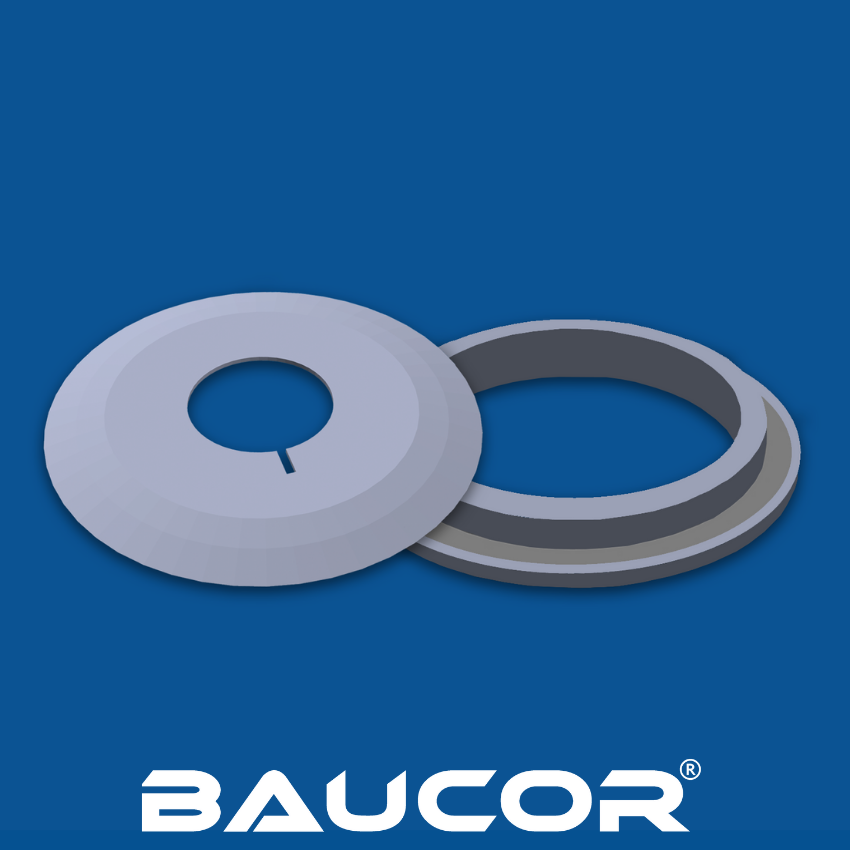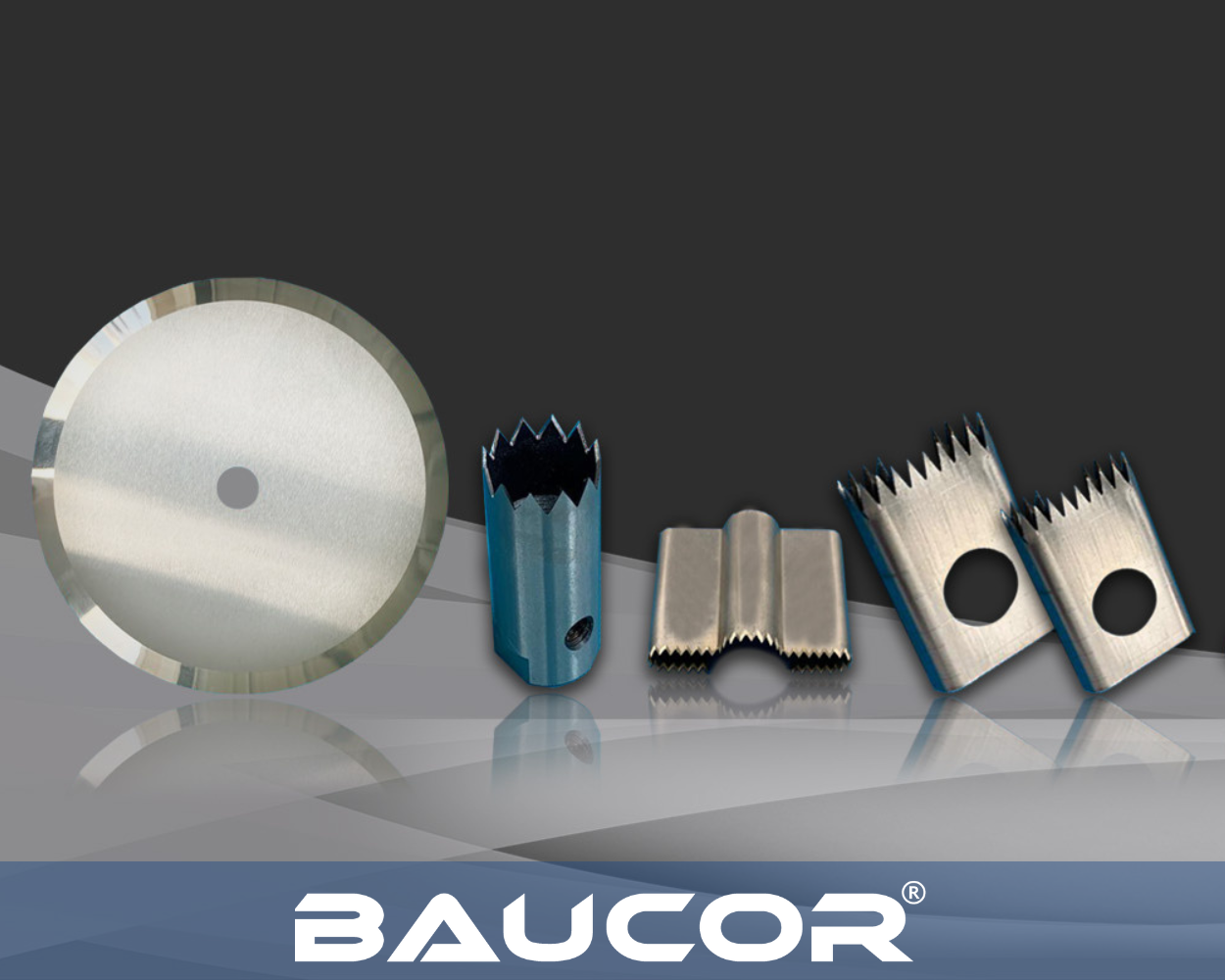Advancements and Trends in Circular Slitter Blades

Baucor is a leading manufacturer and supplier of precision blades and knives, with expertise in providing solutions for various industries. With years of experience, Baucor has established itself as a trusted name.
Circular slitter knives are essential in various industries, such as paper conversion, packaging, food processing, and printing. These knives are crucial in cutting materials into different shapes and sizes with precision and accuracy.
The importance of circular slitter knives lies in their ability to provide efficient and reliable cutting solutions that meet specific requirements. These high-quality blades ensure clean cuts without fraying or tearing the processed material.
These innovative cutting tools are revolutionising industries and driving efficiency like never before. From paper and packaging to textile and metalworking, circular slitter knives ensure precise cuts, reduce waste, and maximise productivity. Here, we will discuss the latest trends and innovations of circular slitter knives.
Historical Development of Circular Slitter Knives

A unique history of innovation and advancement characterises circular slitter knives. These essential cutting tools have changed in materials and design to meet industry needs. A brief history of circular slitter knives:
Pre-Industrial Revolution Origins: Circular slitter knives have been used for ages, initially made of stone and later metals. Modern tools are more precise and durable than these homemade ones.
The Industrial Revolution (18th-19th century) led to considerable manufacturing techniques and materials breakthroughs. Improvements in metallurgy allowed the mass production of circular slitter knives. Steel alloys improved blade sharpness and longevity.
In the mid-20th century, high-speed steel (HSS) became popular and led to advancements in materials. HSS circular slitter knives sliced better were more arduous and wore less. This period saw more circular slitter blades in paper, textile, and metal processing.
Late 20th-century circular slitter knives used tungsten carbide and advanced alloys. These materials increase knife hardness and wear resistance, increasing lifespan and improving precision in specialised applications. CNC machining became more common, enabling precise and complicated blade designs.
In the 21st century, circular slitter knives have evolved in materials and design. Composite materials and coatings balance hardness and toughness to improve blade performance. Precision engineering and automation have improved blade manufacture, ensuring quality and uniformity.
Today, Packing, printing, metalworking, and more use circular slitter knives. These cutting tools stay ahead of technology by using new materials and designs to fulfil modern manufacturing needs.
GET A QUOTE
Current Trends in Circular Slitter Knife Design

Circular slitter knives are essential in paper, textile, and metallurgical industries. Technology has spurred knife design and manufacturing advances in recent years.
One notable trend is the move towards precision cutting. Manufacturers are using laser cutting to cut more accurately and waste less. Laser-cut circular slitter knives can handle rigid materials and provide excellent edges.
Another trend is using computer-aided design (CAD) in custom knife production. Manufacturing companies can generate complex designs that fulfil industry standards using CAD software. It provides for greater versatility and customisation, ensuring each circular slitter knife is perfect for its purpose.
Recent technological advances have also affected circular slitter knife materials. Ceramic coatings or high-performance alloys extend blade life. The knives' unique materials help lower maintenance expenses for enterprises.
Circular knife design also prioritises ergonomics. Manufacturers are adding ergonomic elements to products to improve user comfort and reduce operator fatigue.
Manufacturers are considering automating circular slitter knife production to meet market demands. Production lines can be more efficient and quality-controlled with robotics.
Current trends favour precision cutting methods offered by laser cutting and CAD software. Circular slitter knives adapt to industrial needs thanks to material and ergonomic advances.
Innovative Materials in Circular Slitter Knife Production

In several industries, such as metallurgy, plastics processing, and paper production, circular slitter knives are necessary instruments. These knives are essential for efficiently and precisely cutting and shaping materials. Manufacturers are investigating new materials to improve the durability, precision, and efficiency of circular slitter knives.
One of the main drivers of this expansion is using innovative materials. Producers are using modern metals and ceramics to create circular slitter knives. These materials perform far better across various industries because of their many advantages.
High-speed steel (HSS) and tungsten carbide are advanced alloys renowned for their remarkable strength and hardness. Their ability to maintain their cutting edge at high temperatures makes them perfect for demanding applications such as plastic film production and paper conversion. The circular slitter knives will last longer thanks to these alloys' superior wear resistance.
Ceramic circular slitter knives are becoming increasingly well-liked because of their unique qualities. Ceramics' hardness and low friction reduce cutting heat. In addition to prolonging the knife's lifespan, this minimises warping or material distortion brought on by excessive heat accumulation and improves precision.
Moreover, new alloys and ceramics offer better corrosion resistance compared to conventional materials like carbon steel. It is beneficial when working with acidic or caustic compounds in food processing and medical device manufacture.
These innovative materials have transformed circular slitter knives in packaging, textiles, printing, and other sectors. Their longevity guarantees extended periods of use between replacement blades while preserving a constant cut quality.
Improved precision also enables cleaner cuts with less waste material left behind, a significant aspect in industrial processes that reduces costs and boosts production.
Technological Innovations in Manufacturing

Technological advances have transformed circular slitter knife manufacture, improving precision and performance. An example is laser cutting, which employs a powerful laser to cut materials precisely. Intricate designs and complex forms are accessible using this technology.
Precision grinding is another knife-making breakthrough. Specialised gear removes extra material from the blade while maintaining sharpness and precision. Advanced grinding ensures consistent results and excellent cutting performance.
When addressing current knife production, CAD is crucial. Designers can use CAD software to generate exact digital models of knives for measurements and tweaks before manufacture. It dramatically lowers errors and guarantees each personalised knife fits specifications.
Laser cutting, precise grinding, and CAD design have made circular slitter knives more efficient. They are now more durable and accurate and perform better in numerous industries.
We can expect circular slitter knife production improvements as technology advances. By automating production or enabling customisation, AI and robotics may be significant.
Modern circular slitter knife manufacturing is heavily affected by technology. Laser cutting improves precision, while precision grinding sharpens. CAD has also greatly simplified customisation.
Application of Circular Slitter Knives in Various Industries

Circular slitter knives are cut efficiently and precisely in numerous industries. These knives are crucial in the paper business. Paper manufacturers utilise circular slitter knives to cut enormous rolls of paper accurately. Precision blades ensure the finished product fulfils standards.
The textile industry uses circular slitter blades to make fabric. These knives help manufacturers cut materials quickly and accurately for clean edges and smooth finishes. Circular slitter knives are crucial for quality control in synthetic and natural fibres like cotton and silk.
Metalworking also benefits from circular slitter knives. Metal production procedures like shearing and cutting metal or stainless steel sheets use them extensively. These blades can endure high-pressure cutting and cut precisely.
Plastic packaging and manufacturing use circular slitter knives. They are essential for making precise plastic films for food packaging and industry.
An automobile case study will demonstrate the influence of circular slitter knife applications. This industry uses these blades to cut gaskets, seals, and hoses for automobile assembly lines. Precision from circular slitter knives ensures that each vehicle part fits appropriately.
Circle-slitting knives have become vital across numerous sectors due to their ability to improve efficiency and cut perfectly. Technology will continue to enhance circular slitter knife design and use, making them more critical to numerous industries.
GET A QUOTE
Future Outlook and Emerging Innovations

The future of circular slitter knives holds exciting possibilities, with emerging innovations poised to revolutionise the industry. Using robotics and artificial intelligence (AI) in manufacturing knives is a significant advancement.
Manufacturers can improve precision and efficiency by optimising the design and manufacturing process through the use of AI technologies. AI systems can analyse large data sets to find trends and make deft choices about the features and functionality of knives. As a result, there will be less waste, more productivity, and better cutting precision.
Robotics will also change circular slitter knife production. Automated systems can have unparalleled speed and consistency when handling complex operations like precise grinding or laser cutting. Robots with sophisticated sensors can adjust to changing circumstances instantly, guaranteeing constant quality throughout production.
Material science advancements offer new circular slitter knife potential. The remarkable strength-to-weight ratio of carbon fibre composites, a lightweight and durable material, is making it increasingly popular. These materials lessen the pressure on machines while providing increased performance.
Along with these advancements, 3D printing technology promises to create unique blade designs for specialised uses across various sectors. Rapid prototyping of novel knife shapes gives producers more freedom to satisfy consumer requests.
Looking ahead, it is evident that circular slitter knife production environments will continue to be transformed by AI-powered automation. More study on these technologies should lead to more advanced systems breaking new ground.
Conclusion
In conclusion, the dynamic landscape of circular slitter knives demands a steadfast commitment to continuous innovation. As industries evolve, so must the tools that drive precision cutting. Baucor's unwavering dedication to quality and pioneering solutions underscores its leadership in this competitive arena. By prioritising innovation, Baucor meets current industry demands and anticipates and addresses future challenges. In the ever-evolving realm of circular slitter knives, the commitment to excellence exhibited by companies like Baucor ensures a cutting-edge advantage that resonates with manufacturers and end-users alike.


 English
English